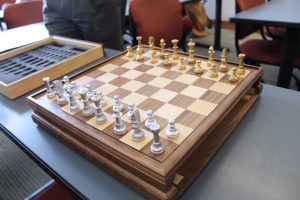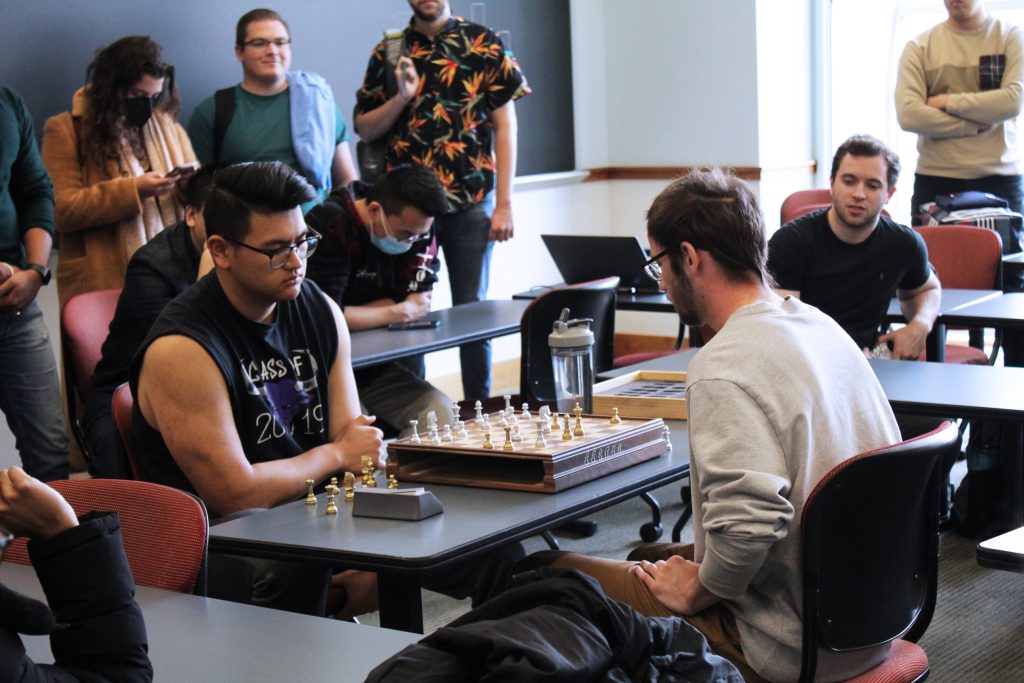
A new project in the Whiting School of Engineering’s Additive Manufacturing course aims to boost learning through a little friendly competition.
While the graduate-level course covers a range of 3D printing applications, this year found students applying the latest technology to the most timeless of games: chess.
Thirty-one students split into two teams – Team Gold and Team Silver – and used their newly developed technical skills to create one half of a standard chess set.
Each piece was designed by an individual student, using a CAD software program called SolidWorks, and produced using a Stratasys 3D printer in the school’s Advanced Manufacturing Lab.
The course is taught by Kevin Hemker, Alonzo G. Decker Chair and professor of mechanical engineering, and S.I.A. Jalali, assistant research professor. Graduate student Sharon Park served as the teaching assistant for the class.
Devised by Jalali, this assignment went beyond just training students how to use 3D software and machinery; rather, it focused on tapping into students’ creativity and problem-solving strategies.
“The different modeling approaches for the chess pieces generated a lot of cool variety among all of the students,” said Daniel Ames, a civil and systems engineering graduate student who produced the queen piece for Team Silver.
Many of the students were pleased with how well the 3D-printed pieces compared to their original computer models.
“Rarely do you have the opportunity to go from design, to prototype, to product in under a week. Through 3D printing, it’s really possible for anyone to develop a good product,” said Jon Hollenbach, a graduate student in materials science and engineering.

Madison Buck and Eric Guo compete in a speed chess tournament.
After printing, post processing, spray painting, and final touches, the complete chess set was ready for action in a speed chess tournament. And students weren’t just playing for “bragging rights” – the winner got to take home the one-of-a-kind chess set.
The friendly rivalry came down to Madison Buck for Team Gold and Eric Guo for Team Silver, who battled it out in the final match. Guo, a second-year majoring in mechanical engineering, walked off with the victory (and the chess set).
For some students, including materials science and engineering graduate student Alex DeJong, this was their first time using a 3D printer and turning their own designs into finished parts. “It was very satisfying to have printed something that closely resembled the original chess piece,” he said.